
| Walk 5 - Hard yakka in the Tararuas |
|
Day 1: Holdsworth carpark to Powell Hut We only arrived at the start of the walk in the Holdsworth Recreation Area of Tararua Forest Park by mid-afternoon due to unavoidable commitments in Wellington. The distance to our destination for the night, Powell Hut, was only 7.5 km, but 850m higher and an estimated 4 hours away. Distance is relatively meaningless for estimating trip times in this terrain and since, for the first time we were setting out in less than ideal weather, a hard push would be necessary to arrive before sunset. We crossed the bridge over the wide Atiwhakatu Stream and set out up the well-formed Gentle Annie Track at a fairly fast pace under grey skies. Gentle by nature as well as by name, the track climbed steadily up through the mixed podocarp-broadleaf forest towards the cloud-shrouded crests of the Tararua Range. A loud shriek overhead alerted us to a small flock of kakas flying by - a rare sight to see this endangered species in the wild. Eventually we levelled out and soon reached the boardwalks crossing swampy Pig Flat, before a short descent brought us to the Mountain Hut Shelter - a good spot for a scroggin-break and protection from the light drizzle that had developed. We were making good time, but the hard part was about to begin - a 580m climb up a tree-covered spur to Powell Hut in less than 2km. |
|
|
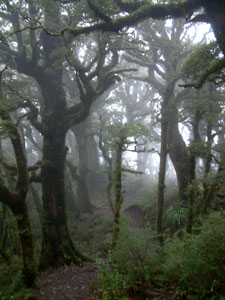 Silhouettes in a misty forest |
The character of the forest changed as we gained altitude - the trees became more stunted and mosses, ferns and lichens increasingly covered their trunks and the ground beneath - we were entering the "goblin" forest zone. The drizzle stopped and for a brief moment, the sky seemed clear, but soon we found ourselves climbing up into the mists that shrouded the mountain tops. Goblin forest in a deep mist is a very eerie place. After several "false" crests, where the anticipated hut did not appear, we finally saw a very welcome Powell Hut perched on its narrow ledge on the Mount Holdsworth spur - it had taken us 3h 20m to reach. |
|
 Track climbing into the mist |
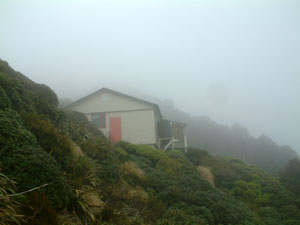 The welcome sight of Powell Hut |
|
|
 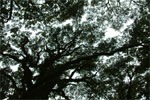     Can you spot the goblins in the goblin forest? |
|
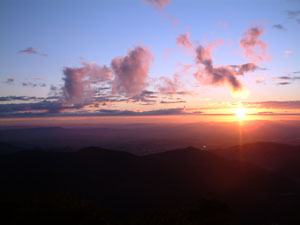 Sunrise at Powell Hut |
 Early morning at Powell Hut overlooking the lower ranges and the Wairarapa Plain |
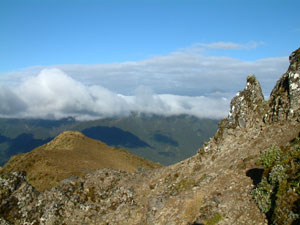 Climbing Holdsworth Spur |
|
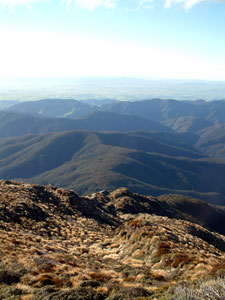 At first the sky was clear ... |
 ... but soom a mist began to appear .. |
 ... until the fair Nello disappeared into the fog just below Mt Holdsworth |
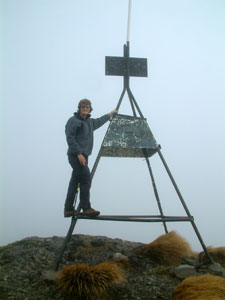 On Mt Holdsworth |
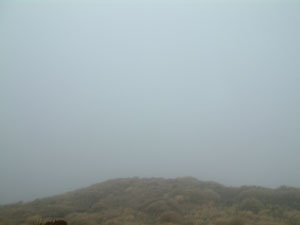 Part of the sweeping views from Mt Holdsworth |
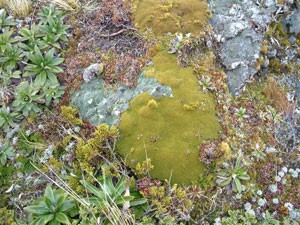 Alpine plant community |
Out of the mist a trig appeared, heralding our arrival at the peak of Mt Holdsworth, famous for its sweeping views - we saw nothing! However, to experience a Tararua fog was a bonus in itself and, as we descended to the razorback ridge connecting the two mountains, the wind seemed to strengthen and the mist cleared, first exposing the steep tussock-covered slopes below us on either side, then revealing the ridge itself, with its marvellous communities of alpine herbs and cushion plants, and finally lifting high enough to see the outlines of Jumbo and the crests of spurs, saddles and mountain tops. Our path undulated over knolls and saddles, passing several beautiful little tarns in their ridge-top hollows. |
||
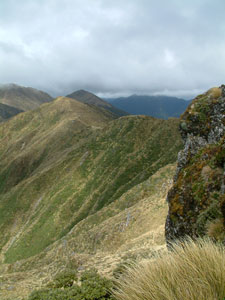 Looking back to the razorback ridge |
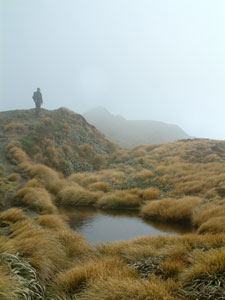 |
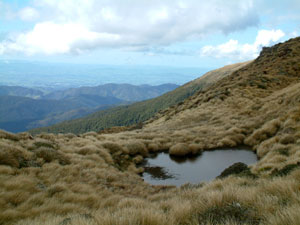 |
|
Tarns of the Tararuas |
 |
||
|
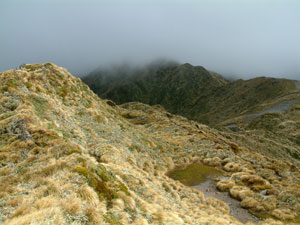 |
||
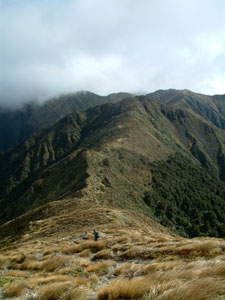 On the ridge from Holdsworth to Jumbo |
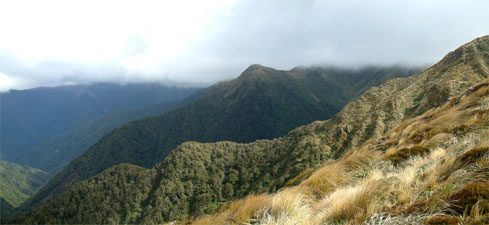 Tararua landscape |
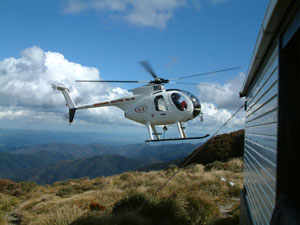 An unexpected visitor to Jumbo Hut |
|
||
 View from the verandah of Jumbo Hut |
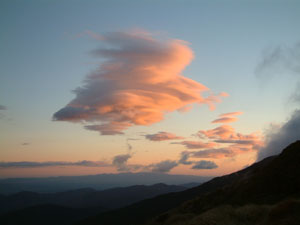 Tararua sunset |
|
|
          |
Day 3: Down, down and more down
|
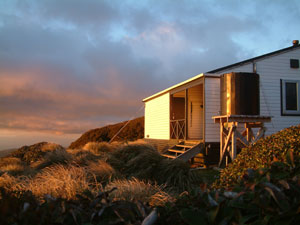 Early morning at Jumbo Hut |
|
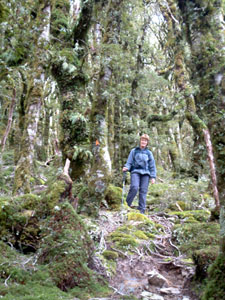 |
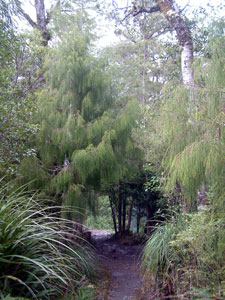 |
|
|
|||
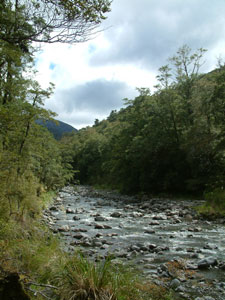 |
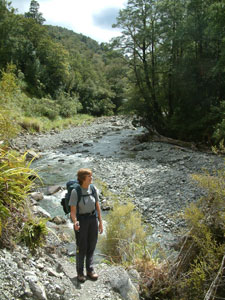 |
 |
 |
Several Atiwhakatu Streamscapes
|
||
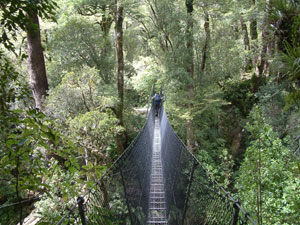 One of the many bridges on the track |
 New Zealand tomtits |
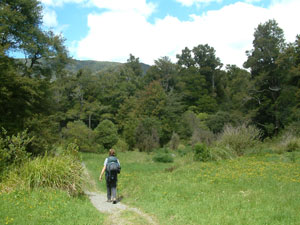 At last a forest clearing |
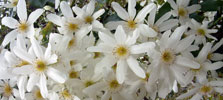 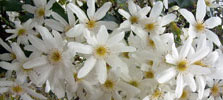   |